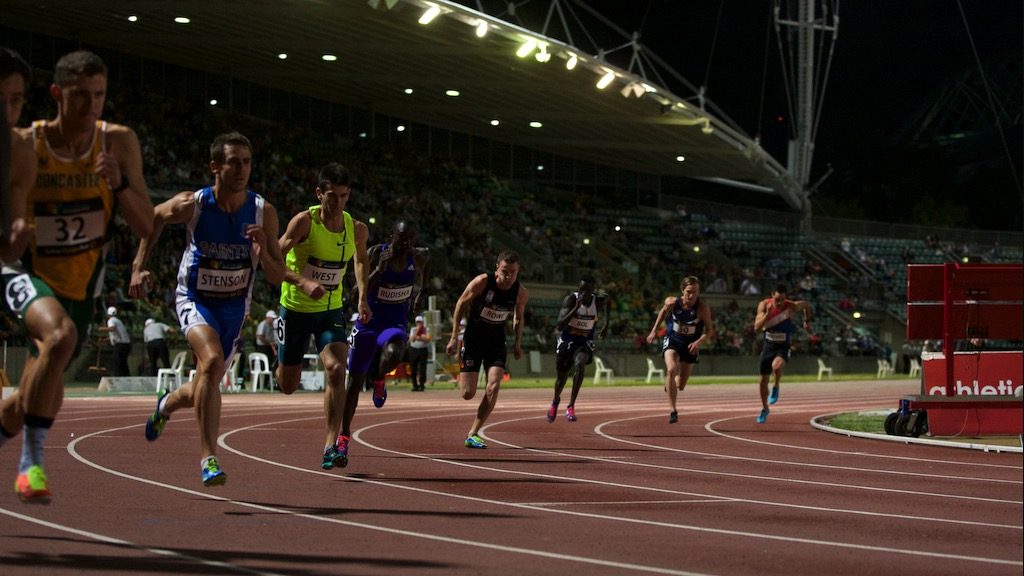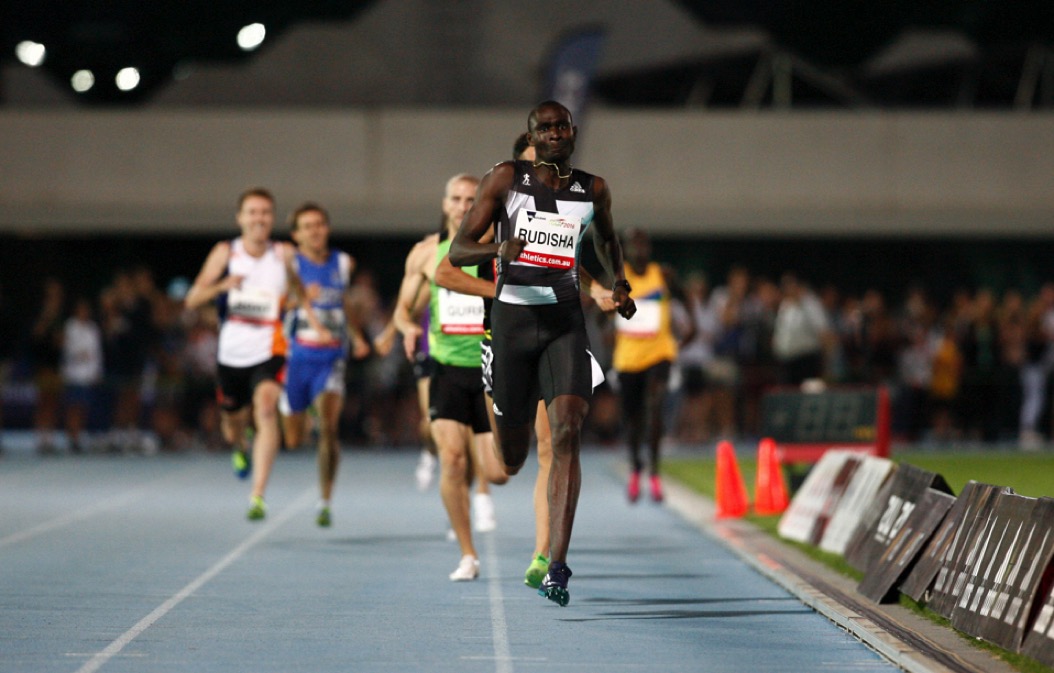Australia and the Men’s 800m – 4 part series
- Part 1 – Australia’s Standing in the 800m
- Part 2 – Why have we underachieved?
- Part 3 – How we can become better
- Part 4 – Coe as a Junior
Part 2. Why has Australia underachieved in the 800m?
It is very difficult for a man, born and bred in Australia, to be world class over 800m. Aside from difficulties with being in the southern hemisphere, I see three omnipresent obstacles in his way. It’s very difficult to avoid one or two of them, if not all three.

Problem 1: We specialise too early
Kids can get too serious too soon, specialise too young and if running the 800m, possibly launch a long (or short) journey of excessive anaerobic training and racing. This leads to burnout. Five to ten years of this type of taxing training and racing is a recipe for failure. The jumpers, throwers, sprinters and long distance runners don’t suffer the same fate due to the different energy systems in play for those events.
Little Athletics (organised athletic events from under 7, with state championships commencing in under 9) can be great fun, but care must be taken not to push the kids too hard.
Australia had six different male athletes feature in the World top 10 for 800m from 1958 to 1982. Then no one comes close for 35 years. Little Athletics began in 1964 and by 1969 had 39 centres in Victoria. In 1972 it’s Australia wide. By the mid 80s, in theory, we should be seeing all that developed Little Athletic talent well and truly starting to make its presence felt in senior ranks on the world stage. The opposite happens for the 800m runners. Coincidence or not? For 35 years… no 800m success.
Little Athletics does not boost numbers in senior athletics. Retention rates are poor leading into junior ranks. In 2013 the peak age in athletics participation in Australia was eight years of age with 11900 eight year olds Australia wide. There were 600 19 year olds. That’s all disciplines, not just middle distance, and both genders.
Tim Noakes, M.D., professor of exercise and sports science at the University of Cape Town, states in his Lore of Running, “Many worry about burnout in youth who start early. While physical burnout is a myth (except for short-term overtraining, which quickly abates when the athlete takes a break), emotional burnout is often observed in early bloomers: At a certain age they’ve had enough. Often this is tied to situations where they’ve had excessive pressure, either overt or perceived, but sometimes they just tire of running competitively. Noakes again: “I would suggest the majority of successful child athletes retire from competitive sport for the same reasons as do adults. Either they reach the goals they set themselves, or they prefer to devote their time to developing other interests or facets of their personalities.”
“One of the most consistent findings in pediatric exercise science is that the anaerobic system is not fully developed until children have passed through puberty.
Physically immature youth who undertake high volumes of intense training are at relatively high risk for injuries, abnormal growth and maturation, and psychological burnout.”
Problem 2: Schoolboy athletics
There are two issues here, the extended double track season (school and club) of eight months with two or more (up to 5) peaks, and the training involved for that. Many schools’ athletics training begins in August and runs to October. Then there’s club athletics from October to March (even to April). That’s eight months of track training and racing for young athletes depending upon how they are coached. Years of 800m specific catabolic training for multiple months each year is harmful to long term development. The Brits, Americans and Kenyans don’t have this extended school / club season we have.
While Aussie junior 800m talent may be churning out 300m reps, others, like a young Seb Coe for example, perhaps contrary to popular belief, are developing their aerobic capacity with a strong focus on cross country and distance running. Consider, for example, Coe’s 3000m performances and compare to his 800m.
3000m 800m
15 yrs 9 mths – 8.49.0 15 yrs 8 mths – 1.59.9
16 yrs 9 mths – 8.34.6 16 yrs 7 mths – 1.56.0
18 yrs 8 mths – 8.14.8 18 yrs 8 mths – 1.53.8
Coe’s 3000m times are excellent and far superior to his rarely contested efforts over 800m. By chance or by design? Remember, this is a runner who was, at one stage, 1.7 seconds clear of the next best ever over 800m.
One could argue that you would expect similar problems with our 400m athletes with specialising too early and having multiple long seasons when a junior. The 400m places stress on the glycolytic energy system. How have they done well and our 800m runners haven’t? They focus more on 100m and 200m training. Being a stronger build, perhaps they play more ball sports and didn’t specialise early. I believe 800m racing and training is more taxing.
It is worth noting that Coe had only run two 400m races (one a relay) until he was 20.
Video: Seb Coe talks about overworking young athletes
Problem 3: Lack of endurance
I believe that many Australian 800m runners aren’t running the miles required to develop their aerobic capacity. Every ten years or so some article quotes Ralph and Herb about Aussie 800m runners not doing enough base work. Well, it’s ten years since Run For Your Life magazine printed “The 8 Debate” where Doubell stressed that importance of a building a big base.
Our three most successful 800m runners, Doubell, Elliott and Bourke, all ran big miles. During winter, Doubell ran “12-15 miles per day” 6 days per week, Elliott ran at least “80 miles per week”, and Bourke “140-150km every week for ten years”. To be world class, an 800m runner needs to build up to running run between 110 to 150 km per week in the winter season.
I’ve just been reading a little of Coe’s first autobiography, “Running Free”, and found another snippet hinting at the type of preparation he did. In preparing for Moscow, a hard, hilly, fast ten mile run is described. It was a run Seb had completed “hundreds” of times before. You can’t do the occasional hard, hilly, fast ten miler off 35 miles per week. To be able to do it, a lot of miles have to be run. As was the case with Cram, Ovett and Peter Elliott, Coe did a lot of long running. There are numerous accounts of events indicating Coe completed a large base.
There are many who believe that Seb Coe only ran 50 (or fewer) miles per week in the winter. I believe this has influenced the majority of Australian 800m runners of the past 35 years. Now, in recent years, the focus has turned to David Rudisha. This reinforces the low mileage viewpoint.
There has been discussion of Rudisha’s mileage. According to SWEATELITE, “the 800m guys will run at maximum 55 miles in a week, David included… and often less.” I see a few significant buts with this…
- Mileage given by Br Colm is prefaced by, “we don’t count the miles”.
- Japhet Kimutai (coached by Brother Colm) ran 110 km (68 miles) per week in winter (Train Hard, Win Easy by Toby Tanser)
- In Rudisha’s lead up to the World Juniors, he did a weekly long run of 80 minutes (as a junior) and did LOTS of Easy Running (‘More Fire: How to Run the Kenyan Way’)
- Rudisha only attended “about half” of the sessions when SWEATELITE observed Br Colm’s 800m group.
- David Rudisha is a great admirer of Sebastian Coe. Remember Peter Coe’s advice to a fun runner about to enter a three mile fun run; “Rule 1: Play it cool – don’t even tell your son what you’re at. Act nonchalantly and don’t let the enemy know what you’re doing.” (Running for Fitness, by Sebastian and Peter Coe).
- We’re told the distance of Br Colm’s group’s warm up is irrelevant, as long as you feel warmed up. “10 minutes or 25 minutes. It is the same.” No, one is 10 minutes, the other is 25 minutes. Different.
- “Normally the warm up and cool down is very, very easy (around 5:30-6 min / km) and typically 15-20mins. ‘They aren’t too specific with the exact duration/length of this.’” according to SWEATELITE
- This program suggests 110 km a week in December – usually a low mileage month for Kenyans
- In More Fire: How to Run the Kenyan Way, Brother Colm says, “Remember, even 13-year-old girls are training three times per day.”
- An interesting observation: Br Colm was “curmudgeonly” when an established visitor asked to watch Rudisha train. (Running With The Kenyans by Adharanand Finn p.194).
End of Part 2 of 4
Part 3. How does Australia become better at 800m?
“The Kenyan secret comes from years of training at the right intensity – and a few years with harder track work. Most Europeans and Americans tend to start in the other end. At very low (and slow !) mileage they do these hard track sessions that simply kill the little endurance they have from the beginning of. ” Marius Bakken
“I had a massive physical advantage over other athletes who didn’t do cross country.” Seb Coe
…Part 3 publishing tomorrow morning
Featured series ‘Australia and the Men’s 800m’ – by Tony Wilson – Runner’s Tribe






























The points above are reasons why boys already running are not becoming world class. I suggest an additional reason.
Those boys with the potential to be world class may not be running but instead choosing football (AFL) over athletics.
1. Speed and endurance requirements of football probably best match middle distance runners. Not as well suited to sprint and long distance athletes hence less impact on these events.
2. Average pay for an AFL player is in excess of $300,000 with minimum around $70,000 for a kid just drafted. How many middle distance runners are earning these amounts from running alone?
3. Potential fame / publicity of an AFL player compared to elite athlete.
4. Football has only been truly professional since the 1980s. Hence the reduction in 800m performance since then.